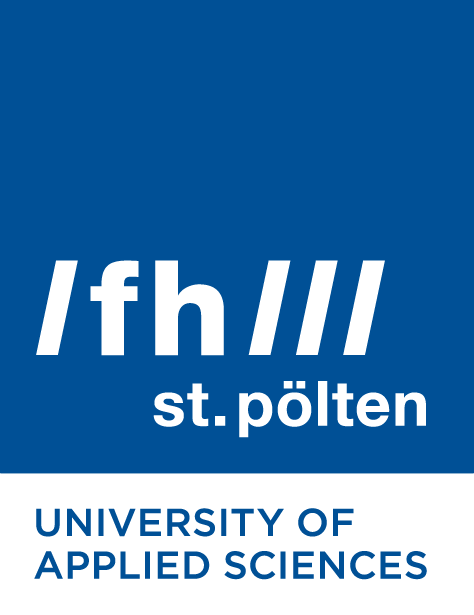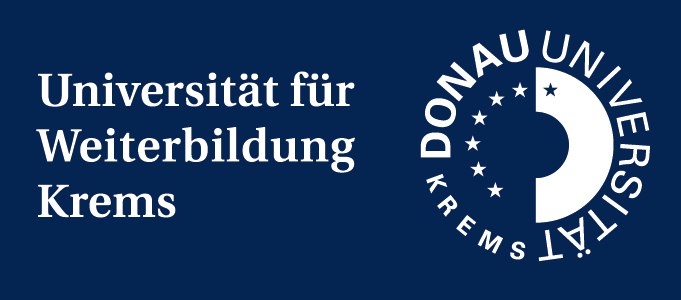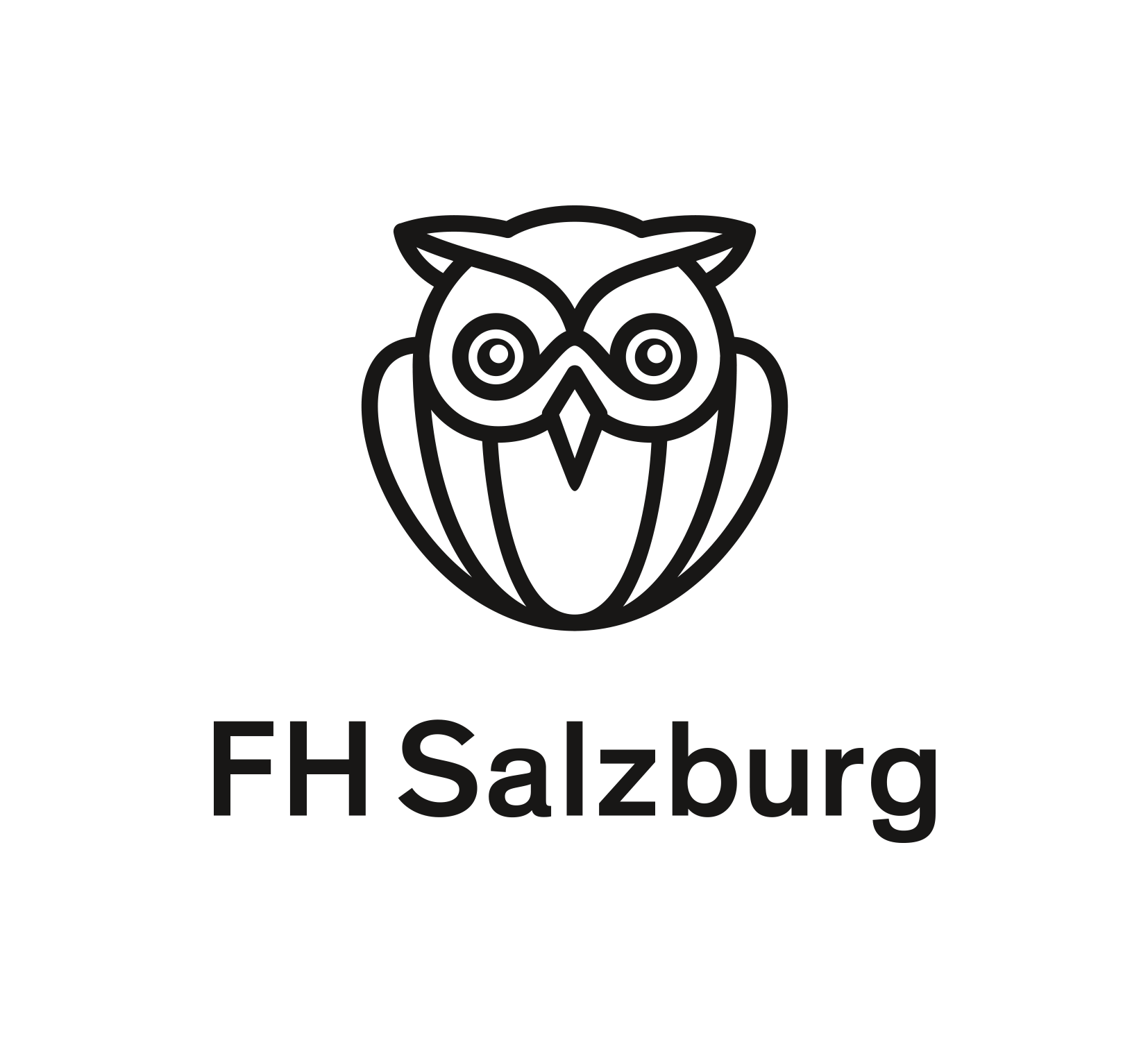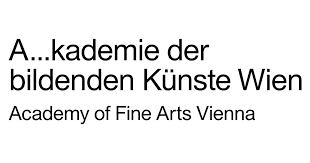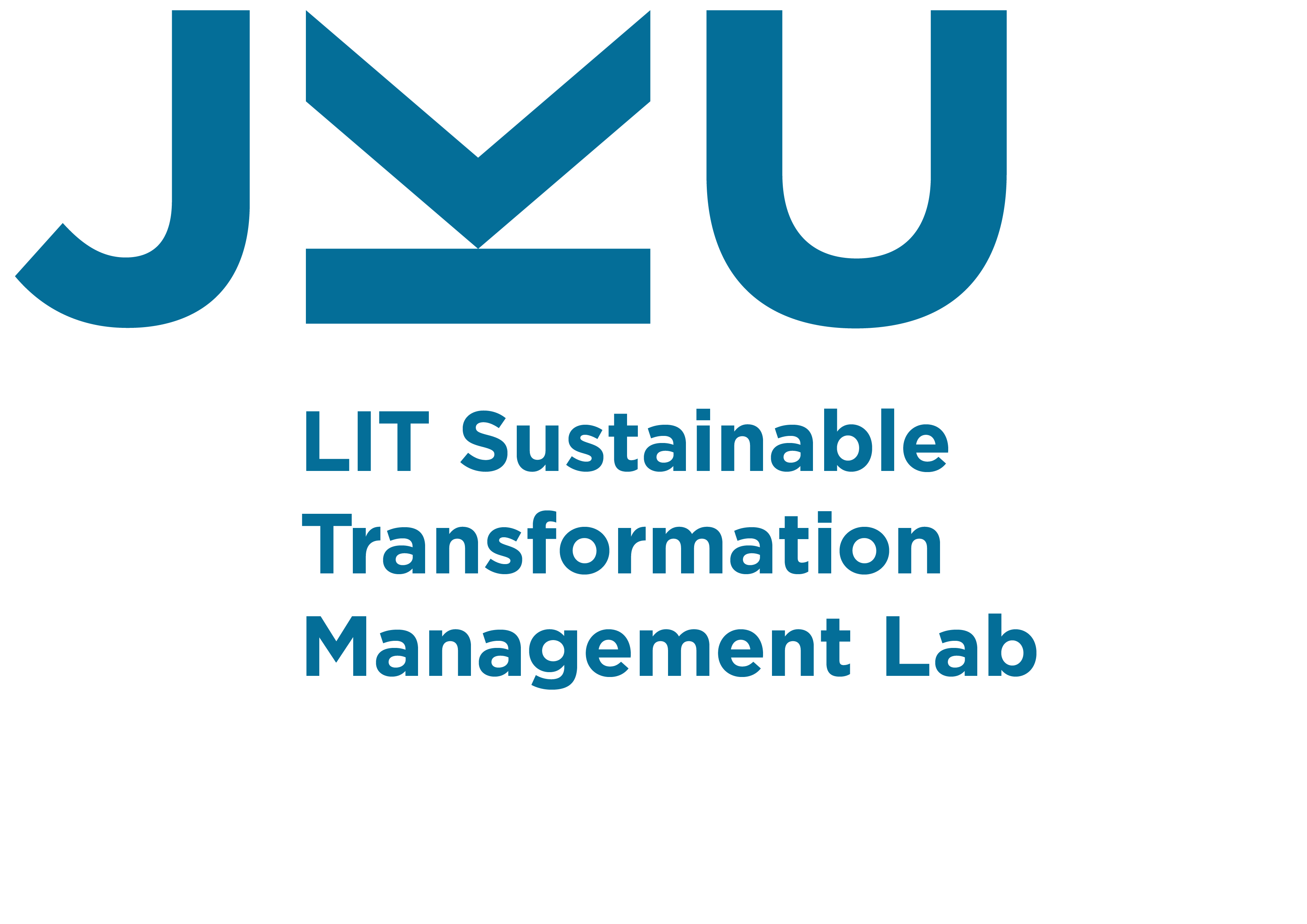Young Citizen Scientists against Disinformation
A couple of Instagram stories here a TikTok video there: The pervasiveness of our everyday lives with more and more media content consumed in a short period of time has completely changed the way we access and deal with information: Due to their everyday use of and the strong fusion of their lives with social media, it is young people who are most affected by this development.
The project “Young Citizen Scientists against Disinformation” aims to explore the topic of disinformation from the perspective of those young adults, by involving them into the research project by a Citizen Science approach. As everyday life of young adults has changed a lot due to the constant confrontation with media content and information, they must become researchers themselves to critically analyse (dis-)information. Therefore, the project puts emphasis on coping strategies and the processes of valuing (dis-)information, as opposed to the truthfulness of the content being delivered. To put this aim into practice, the University for Continuing Education Krems and the FH St. Pölten will work together with Citizen Scientists from three classes of higher schools in Lower Austria (HLW Tulln, HTL St. Pölten, BRG Krems)*. The citizen scientists are invited to define the phenomenon of “disinformation” from their perception and to adapt the research focus on that behalf. Moreover, they will collect and analyse data on (dis-)information relevant for them in their everyday lives. The data may contain information about where and how they are confronted with disinformation, research, and evaluation behaviour as well as questions and uncertainties about the topic.
Additionally, researchers will prepare research material and questions concerning three topic areas that will be discussed together with the young Citizen Scientists. Those topic areas include (1) perspectives and approaches of politics and science and how young people feel they have been addressed by those until now; (2) state interventions and civil protection and how they value current regulations as well as (3) technical solutions and what role technical applications and tools play in their (dis-)information practices. Both, the data collected by the Citizen Scientists as well as the data collected by the researchers will be discussed, analysed and interpreted together with the Citizen Scientists in class. Finally, the research project will contribute a Citizen Science based concept for a future disinformation platform/infrastructure/tool, building on the findings of the research project, on how to address young adults needs and wishes.
*Participation is restricted to these school classes and therefore closed to outsiders.
The project is funded by the Lower Austrian Research Promotion Agency as part of the RTI Strategy Lower Austria 2027.
U3Green
Promotion of child and youth-friendly urban landscapes through participatory research on urban green
The development of child- and youth-friendly cities is becoming increasingly important due to the deteriorating quality of life in urban areas. An important contribution to this relates to the provision of urban green suitable for young people and their involvement in the future design of urban landscapes. However, it must be taken into account that children and the youth make demands on urban green that are often not sufficiently known and which differ from what adults need and from what adults consider important for children and the youth. As a result, the participation of young people in the collection, evaluation and communication of what is important to them with regard to urban green plays an important role. But the involvement of young people in participatory initiatives is difficult, often falls short of expectations and is linked to various open questions, such as what are suitable tools and strategies to inspire and involve children and the youth in participatory initiatives.
With regard to these challenges, „u3Green“ pursues three goals:
- basic knowledge about the importance of urban green for children and the youth and how they actually use urban green will be gathered;
- a web-based, child and youth-centric application will be developed to collect, evaluate and share information on urban green;
- the results on the importance of urban green for children and the youth will be communicated using suitable geovisualization platforms such as interactive online maps and story maps.
Within the framework of various participation formats young people are involved in achieving the “u3Green” project goals using various methods (participatory design, participatory mapping, spatial data science, visual/ cartographic communication) and IT and geoinformatics tools (including ESRI applications). On the one hand, this refers to the participation of school students from the partner schools in workshops and spotlight events in order to discuss questions related to the challenges mentioned above and to develop initial solutions. On the other hand, school students from the partner schools contribute to the detailed answering of the questions within the framework of internships and workshop camps lasting several days.
Especially through the participation formats, "u3Green" supports the training of specialist knowledge and skills in the STEM field (i.e. teaching and study subjects relating to mathematics, computer science, natural sciences and technology) and other "soft skills" (e.g. science literacy) - in addition to an improved consideration of urban green spaces for young people in planning processes and an increased building of social awareness regarding urban green.
Co-operation partners: Österreichischer Dachverband für Geoinformation, Private Pädagogische Hochschule der Diözese Linz, Salzburger Institut für Raumordnung und Wohnen, Spatial Services GmbH;
Partners from Economy and Society: Naturpark Weißbach, Universität 55-PLUS, Paris Lodron Universität Salzburg, Wissensstadt Salzburg;
Participating schools: Akademisches Gymnasium Salzburg, ASO Stadt Salzburg, BG Zaunergasse, Salzburg, BORG Oberndorf, Holztechnikum Kuchl, Werkschulheim Felbertal; BG & BRG Keimgasse Mödling
Video
@projekt.u3green Wir brauchen deine Stimme! ☀️ #u3green #plus_1622 #fyp #foryoupage #fy ♬ clocks - -
u3Green is funded by the Federal Ministry of Education, Science and Research in the Sparkling Science 2.0 program
Humane PapilloWAS?
In order to find out how information about HPV needs to be prepared to reach the target groups, we are working together with parents, teachers and students in the project “Humane PapilloWAS?” to reveal what is known about HPV and which misinformation is circulating.
Background
Only 46% of the population in Austrian are aware about human papilloma viruses, or HPV, and only 34% associate HPV with cancer. This shows that there are gaps in the population's knowledge of a virus that almost everyone becomes infected with in the course of their life. A vaccination against HPV, which results in 90% protection against cervical cancer, could even eradicate cervical cancer and other HPV related cancer types if the majority of the population were vaccinated. HPV can cause 6 different types of cancer that also affect men. The vaccination should ideally be given to children between the ages of 9 and 13, as they develop the best immune response to the vaccine and the virus. It is therefore important that particularly parents and their children are informed about HPV through the right information channels. In order to find out how information about HPV needs to be prepared to reach the target groups, it is necessary to work together with the relevant groups of people already from the beginning. The project is supported by biomedical scientists, communication experts and people affected by cervical cancer.
Goals
The aim of the project is to give the population an understanding of HPV and its possible effects in order raise their health competence. It can also be a basis for communication measures in similar health-oriented projects in the future.
Realisation
In this project, the most effective information channels and methods were identified in several workshops in 2023 together with citizens, in order to develop a communication strategy for a good education campaign.
Within a smaller advisory board of citizens, a survey was developed in which around 900 people participated. The results will be evaluated in 2024 and published in an open access journal. Also in 2024, a communication campaign in collaboration with Citizen Scientists will be realised in Salzburg. Moreover, further events will take place to increase HPV awareness.
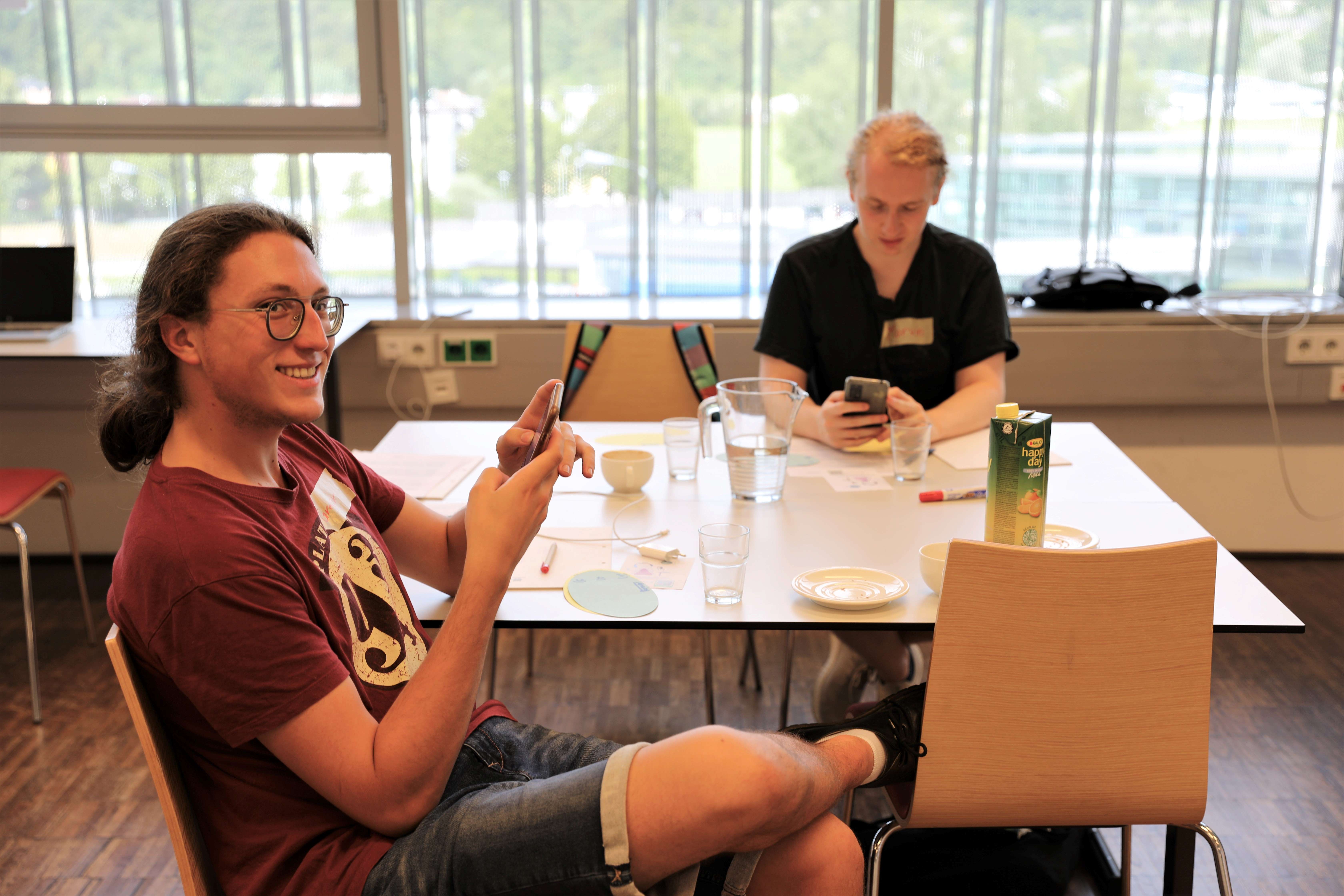
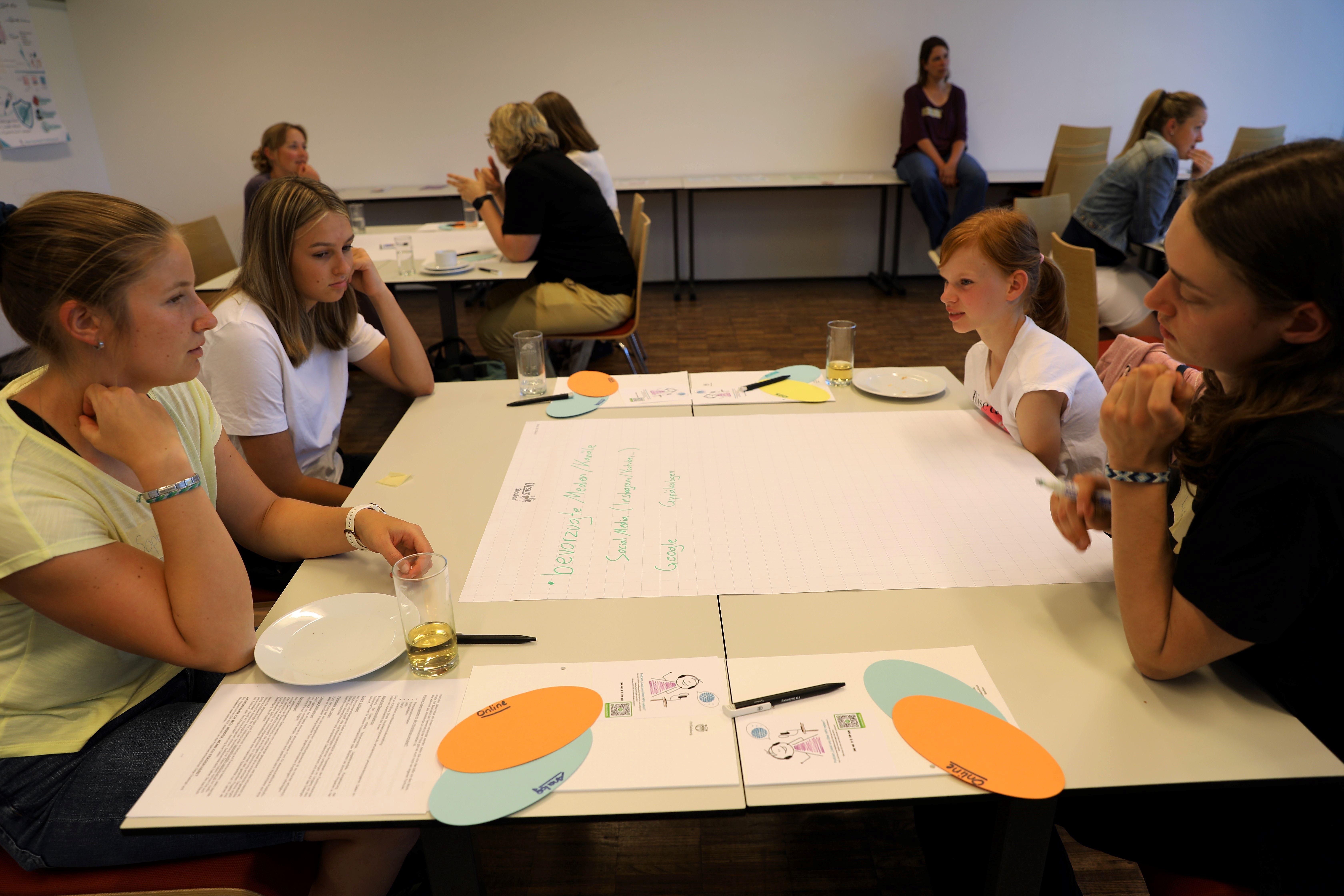
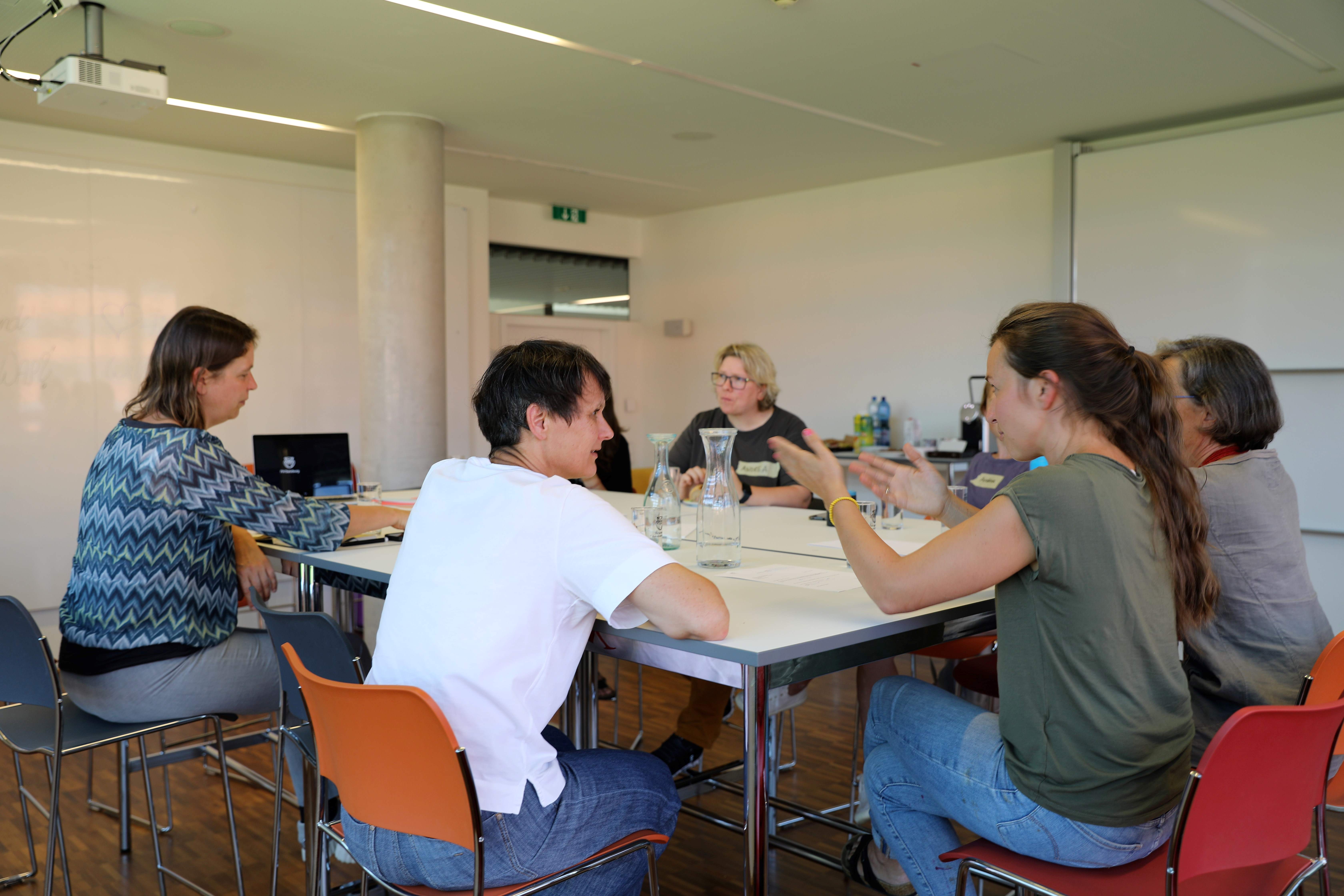 (c) BMA / FH Salzburg
(c) BMA / FH Salzburg
Roles within the project:
- Parents: This group takes on the role of those entitled to make decisions: How do I decide and how do I tell my child?
- Young people (student representatives): This group takes on the role and perspective of those directly affected when it comes to infection and vaccination.
- Teachers: This group forms an important intermediate link between parents and students in the transfer of information.
- Researchers: dissemination of information, science communication, support of citizen scientists, project implementation & workshop moderation
Citizen Science Award 2024
The project is also participating in this year's Citizen Science Award. School classes from the 4th grade onwards & individuals can take part from April 1st, 2024 to July 31st, 2024 and win the Citizen Science Award with prize money of up to € 1.000. Participants are invited to create a short video about HPV for social media and send it to the researchers. The three best videos will be awarded a prize and used for the awareness campaign. Register now to take part in the award: This email address is being protected from spambots. You need JavaScript enabled to view it..
Results
The results of the project are available on the project website and on the FH Salzburg website and were presented at an event together with the citizen scientists in November 2023.
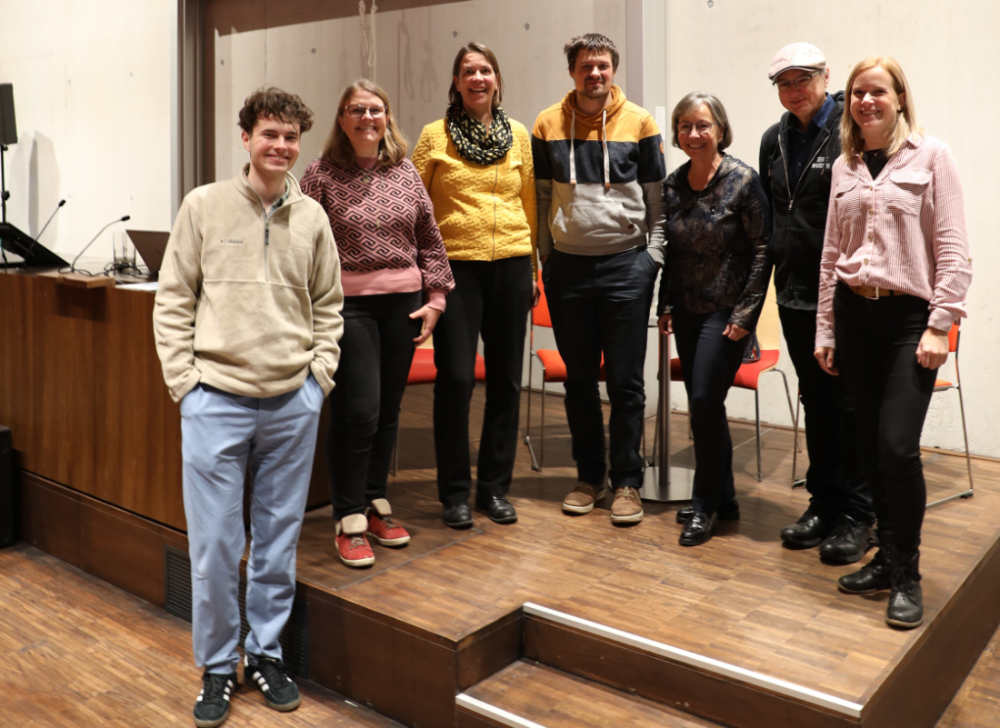
(c) Elena Franke / FH Salzburg
Podcast
If you would like to learn more, you can listen to the "Wissen macht Leute" podcast episode about the project (in German). More information can be found here.
The project also has its own podcast. You can listen to it on Spotify: https://open.spotify.com/show/5TdAebPNRHev8PtR8jLzTh.
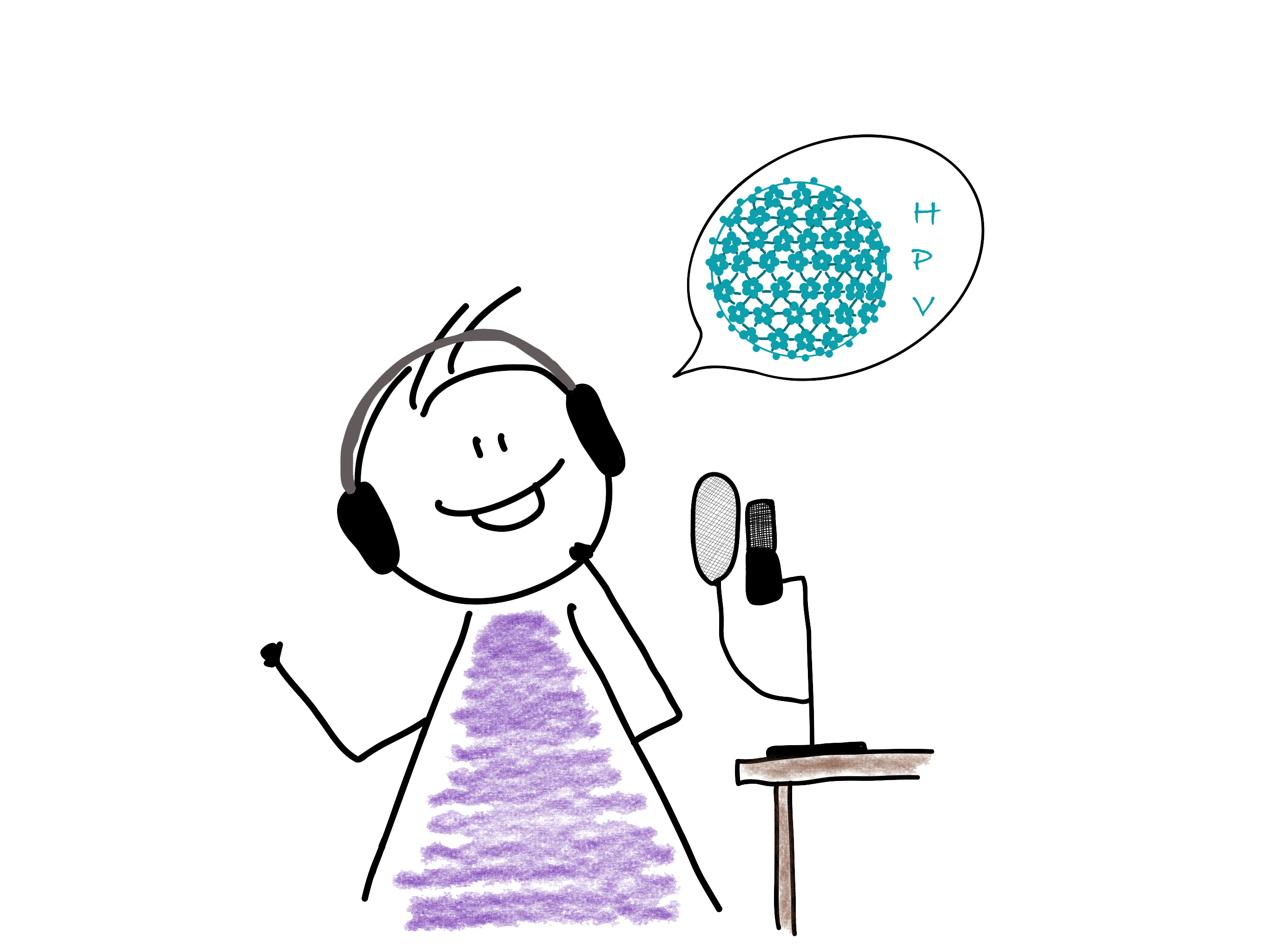
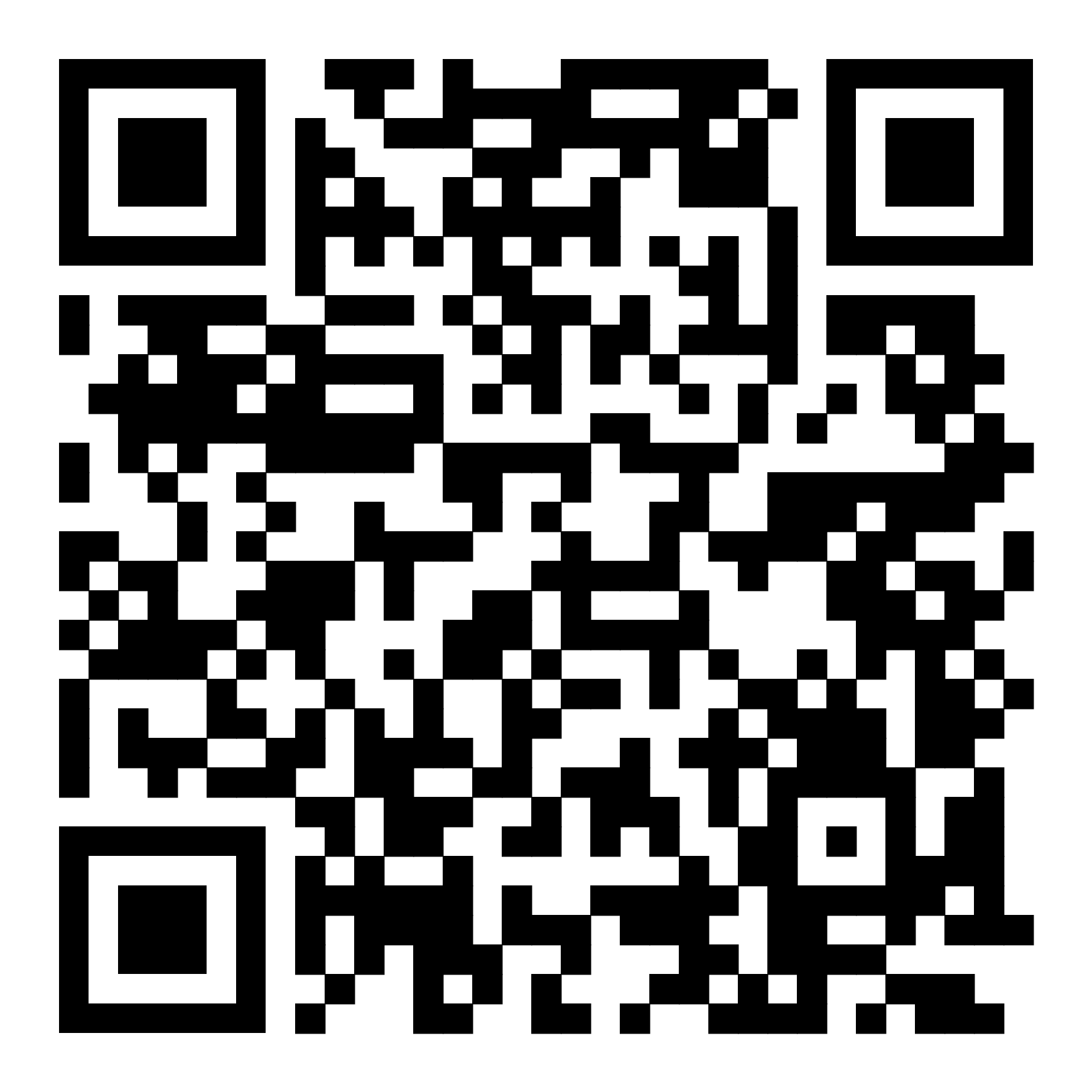
Writing history: Letters 1920–1934
What is the project about?
The crowdsourcing project "Letters 1920-1934" is about the transcription of the unique letter collection of the Vienna City Library from this period. In contrast to historical printed works, which are now subjected to automatic full-text recognition as standard, this is still not so easy to do for manuscripts - especially when the documents come from many different writers, as in this case. Since the democratization of knowledge plays a central role in the range of tasks of the Vienna City Library and the pilot project "Letters 1914-1919" has been a great success, we are again asking the crowd for help in indexing the content.
The Vienna City Library will digitize all correspondence - more than 200,000 items - by 2025 and make them freely available in the Digital Library in compliance with copyright law. Due to the alphabetical approach, the crowdsourcing project's holdings will successively expand up to the letter Z.
How can one contribute?
Participation is open to all interested persons. After registering, you can choose between two tasks: Transcribe letters or check letters already transcribed by others. If errors are discovered, they can be changed and a new version created. Three independent confirmations are necessary for a transcription to be classified as correct.
What happens to the results?
The finished transcriptions are integrated into the Digital Library of the Vienna City Library at regular intervals and can then be retrieved and searched at any time. This makes the contents of the letters accessible to all interested persons - something that was previously reserved for a limited circle of experts.
Crowdsourcing platform crowdsourcing.wien
The project "Letters 1920-1934" is part of the crowdsourcing platform crowdsourcing.wien – a cooperation of Wien Museum and Vienna City Library. The aim of this joint platform is to make original sources on the history of Vienna from various institutions accessible to all interested persons with the help of the crowd. Because only knowledge that can be read and comprehended can be brought to life and made available for inclusive debate.
More information: crowdsourcing.wien
Podcast episode
In July 2023, project coordinator Alexandra Egger was guest on the Österreich forscht podcast Wissen macht Leute - you can listen to the episode here (in German).
Picture gallery:
-
 Letter from Maria Herz to Elise Richter, 21.6.1921, HIN-108648, Vienna City Library Letter from Maria Herz to Elise Richter, 21.6.1921, HIN-108648, Vienna City Library
Letter from Maria Herz to Elise Richter, 21.6.1921, HIN-108648, Vienna City Library Letter from Maria Herz to Elise Richter, 21.6.1921, HIN-108648, Vienna City Library -
 Letter from Marianne Hainisch to Rudolf Beer for the Austrian Mother's Day Committee, May 1932, HIN-116120, Vienna City Library Letter from Marianne Hainisch to Rudolf Beer for the Austrian Mother's Day Committee, May 1932, HIN-116120, Vienna City Library
Letter from Marianne Hainisch to Rudolf Beer for the Austrian Mother's Day Committee, May 1932, HIN-116120, Vienna City Library Letter from Marianne Hainisch to Rudolf Beer for the Austrian Mother's Day Committee, May 1932, HIN-116120, Vienna City Library -
 Letter from Josef Jarno to the management of the German Volkstheater [Rudolf Beer], 2.12.1927, HIN-116144, Vienna City Library Letter from Josef Jarno to the management of the German Volkstheater [Rudolf Beer], 2.12.1927, HIN-116144, Vienna City Library
Letter from Josef Jarno to the management of the German Volkstheater [Rudolf Beer], 2.12.1927, HIN-116144, Vienna City Library Letter from Josef Jarno to the management of the German Volkstheater [Rudolf Beer], 2.12.1927, HIN-116144, Vienna City Library -
 Letter from Marie Eugenie delle Grazie to Adele Strauß, 27.12.1920, HIN-120252, Vienna City Library Letter from Marie Eugenie delle Grazie to Adele Strauß, 27.12.1920, HIN-120252, Vienna City Library
Letter from Marie Eugenie delle Grazie to Adele Strauß, 27.12.1920, HIN-120252, Vienna City Library Letter from Marie Eugenie delle Grazie to Adele Strauß, 27.12.1920, HIN-120252, Vienna City Library -
 Letter from Rudolf Goldscheid to Rosa Mayreder, 29.7.1928, HIN-120387, Vienna City Library Letter from Rudolf Goldscheid to Rosa Mayreder, 29.7.1928, HIN-120387, Vienna City Library
Letter from Rudolf Goldscheid to Rosa Mayreder, 29.7.1928, HIN-120387, Vienna City Library Letter from Rudolf Goldscheid to Rosa Mayreder, 29.7.1928, HIN-120387, Vienna City Library -
 Letter from Marianne Hainisch to Rosa Mayreder, 11.2.1933, HIN-121134, Vienna City Library Letter from Marianne Hainisch to Rosa Mayreder, 11.2.1933, HIN-121134, Vienna City Library
Letter from Marianne Hainisch to Rosa Mayreder, 11.2.1933, HIN-121134, Vienna City Library Letter from Marianne Hainisch to Rosa Mayreder, 11.2.1933, HIN-121134, Vienna City Library -
 Letter from August Heymann to Artaria and Compagnie, 5.6.1921, HIN-76007, Vienna City Library Letter from August Heymann to Artaria and Compagnie, 5.6.1921, HIN-76007, Vienna City Library
Letter from August Heymann to Artaria and Compagnie, 5.6.1921, HIN-76007, Vienna City Library Letter from August Heymann to Artaria and Compagnie, 5.6.1921, HIN-76007, Vienna City Library -
 Letter from Franz Eichert to Marie Eugenie delle Grazie, 31.10.1920, HIN-89136, Vienna City Library Letter from Franz Eichert to Marie Eugenie delle Grazie, 31.10.1920, HIN-89136, Vienna City Library
Letter from Franz Eichert to Marie Eugenie delle Grazie, 31.10.1920, HIN-89136, Vienna City Library Letter from Franz Eichert to Marie Eugenie delle Grazie, 31.10.1920, HIN-89136, Vienna City Library
https://www.citizen-science.at/en/network/international-partners/tag/media#sigProIdd57757c8f5
Salon of Open Secrets
It is an open secret that hardware operating on our smart devices contains not only plastic, but also conflict materials such as tungsten, tin, tantulum and gold. Technology is therefore not neutral. These resources are mined in conflict regions, assembled to electric circuits under harmful labour conditions and mostly ending up in contaminating landfills. This pollution is best understood as an enactment of ongoing colonial relations to Land.
Arts-based research methods seize artistic practice to unpack complexity. Through opening up our artistic research project to citizens we want to make this phenomenon tangible. Intersecting Art and Science needs to be an experience of empowerment, of encouragement to find new ways.
This Citizen Science projecttackles sensitive issues through an online game that introduces the player to alternative technologies. Participants in our workshops (at the Technisches Museum Wien, the Academy of Fine Arts Vienna children’s university, Maker Fair Vienna and three Viennese schools) can become players and navigate through different scenes to meet specific characters as avatars. These avatars represent real people from around the world, collaborators in our main research project. Through this form of interactive storytelling young people are invited to become inventors of green and fair hardware themselves, to network among each other and transform their ideas into actual prototypes in the next phase of the project.
Through the term Ethical Hardware we want to describe technology that does not harm the environment, but embraces restorative practices for the benefit of nature and inhabitants alike.
There are strong social movements among teenage, female* and non-binary creatives who share similar values (Extinction Rebellion, Fridays For Future). Our Citizen Science Project addresses the lack of communication between academia and the youth movement. We would like to explore the creativity and transformative work performed by young citizens, specifically from minorities, by offering a playful entry point to our research. We hope that the visions contributed by CSs will transform our theoretical definition of what imagining future technologies entails, and vice versa give participants the chance to discover alternative futures. This way together we hope to gain the necessary strengths to face this crisis.
Our research team composed by artists researchers Stefanie Wuschitz and Patrícia J. Reis at the Academy of Fine Arts in Vienna and the citizen scientists will together with the Technisches Museum Wien (TMW), our national research partner, make the research results operative for use in classrooms and after school programs.
Update Social
With your ideas towards a innovative social sector for all
Our society is facing numerous social challenges and the public administration, charities & social service providers, civil society and (social) enterprises are already working to solve them. In the face of increasingly complex challenges, there is a need for more collaboration and dialogue across sectors. Together we can achieve more!
UpdateSocial is designed to provide the framework for collaboration!
In all sectors of our society, there are people who either already have an idea for solving a challenge or want to develop new approaches (e.g. new products, social services). With UpdateSocial, we bundle the innovative power of all sectors and create a breakthrough together. We thus combine the wealth of ideas of civil society with the implementation power of charities and public administration.
To begin with, we (you and I, and many people from different sectors) come up with ideas and approaches to solutions for the previously defined social challenges in a collaborative 48 hour “Ideenwerkstatt” (Ideation Lab). A support program (Accelerator Program for approaches to solutions to social challenges) will accompany the further development of these approaches to make them ready for collaboration with piloting and scaling partners such as Volkshilfe Upper Austria, other social service providers or public administration.
ALL are called to participate. Co-creative, local and digital.

Join the update of the social sector by citizens for citizens!
Together we can drive innovative solutions and strengthen the community for social innovations in Upper Austria.
Role as participant:
Become part of the community of makers, benefit from a public-supported, collaborative and solution-oriented cooperation, help to develop new solutions for the social challenges of our time or commit yourself to take it to the next level with your idea. Curious? Then visit us at https://updatesocial.org/mitmachen/.
Role as mentor / ambassador / implementation partner:
- Support the participants with your knowledge and network. Work with the community at eye level and contribute to a livable future for all.
- Join us in calling on all citizens in Upper Austria and everyone who wants to come to participate in the 48h “Ideenwerkstatt” (Ideation Lab). Whether it's a newsletter or social media - anything works and helps us.
- Do you know other role models who stand for change? Invite them to become part of UpdateSocial.
If you are interested, please contact This email address is being protected from spambots. You need JavaScript enabled to view it..
These partners are already part of UpdateSocial: https://updatesocial.org/team/#partner.
Our mission
With UpdateSocial we want to strengthen the social innovation ecosystem in Upper Austria. The core element of this ecosystem is a strong and transformational community in which there is trust in each other. Thus, this initiative serves as the basic building block for an organically growing movement that drives the digital and green transformation of the social service sector.
How does UpdateSocial work?
Form alliances and define challenges
- We form alliances with leading actors from all sectors to pool everyone's innovative power and foster collaboration.
- The focus is on social challenges that need to be solved. Together with key players in public administration (Land OÖ - Upper Austrian provincial government, Stadt Linz) and with the expertise of Volkshilfe Upper Austria, we identify relevant social issues that we address to civil society.
Mobilizing civil society and (further) developing solutions
- Through an open call at the beginning of March, civil society is to be mobilized for UpdateSocial. Thus, a community will be built to advocate for a sustainable social service sector.
- In mid-April (21. - 23. April 2023), the 48h “Ideenwerkstatt” will take place, where existing and new solution approaches for the identified challenges will be developed. Selected solutions will then be awarded by a jury in diverse categories.
Supporting and scaling ideas with potential
- Initiatives can apply for a support program after the “Ideenwerkstatt” (until 04. April 2023). This starts at the beginning of May (10. Mai 2023) and helps the teams to further develop their solutions through e.g. expert inputs, community meetings and the help of mentors.
- Following the support program, the pilot program will start in October 2022. On October 3, 2023, the project groups will have another opportunity to present their solutions at the Community Celebration. Joint successes will be celebrated, the next steps will be targeted, and the future of the social innovation community will be shaped. What works will be piloted with united strength, e.g. with the help of an implementation partner from our network for social innovation.
Derive and process insights
- Throughout the process of UpdateSocial, which is funded as a scientific project by the Ludwig Boltzmann Gesellschaft, we are collecting insights for a comprehensive "Learning Report" for shared learning on the one hand and for basic research of Open Social Innovation on the other hand.
More information about the project can be found here:
- https://updatesocial.org
- https://updatesocial.org/linktree/
- https://ooe.orf.at/stories/3200196/
- https://www.linkedin.com/company/updatesocial/
- https://www.instagram.com/updatesocial_ooe/
https://www.citizen-science.at/en/network/international-partners/tag/media#sigProIdea3ccad175
Hero
DESIGNING AN INFORMATION TOOL FOR CARDIAC REHABILITATION
Background
Previous research has shown that after an acute cardiac event, such as a heart attack, patients can feel uninformed about the follow-up care and cardiac rehabilitation. Digital technologies have the potential to make health-related information available at any time and in a layman-friendly manner.
The aim of the project was to develop a digital prototype that provides patients with information regarding cardiac rehabilitation following an acute cardiac event.
The HERO-Project
The HERO co-design workshop series was carried out in collaboration between four scientists from the Ludwig Boltzmann Institute for Digital Health and Prevention (LBI DHP) and a total of 16 research partners (ten cardiac patients, six healthcare professionals and one professional with a cardiac patient history).
The workshops were based on the principles of generative co-design. In addition to presentations and group work, which enabled an exchange of experiences, the following methods were used to answer the questions: A brainstorming session in an acute hospital setting to prioritise information and to discuss where to possibly place information in the hospital. Afterwards, paper prototypes were designed to identify latent needs and to define requirements for a digital information support tool. Figure 1 shows impressions from the workshops.
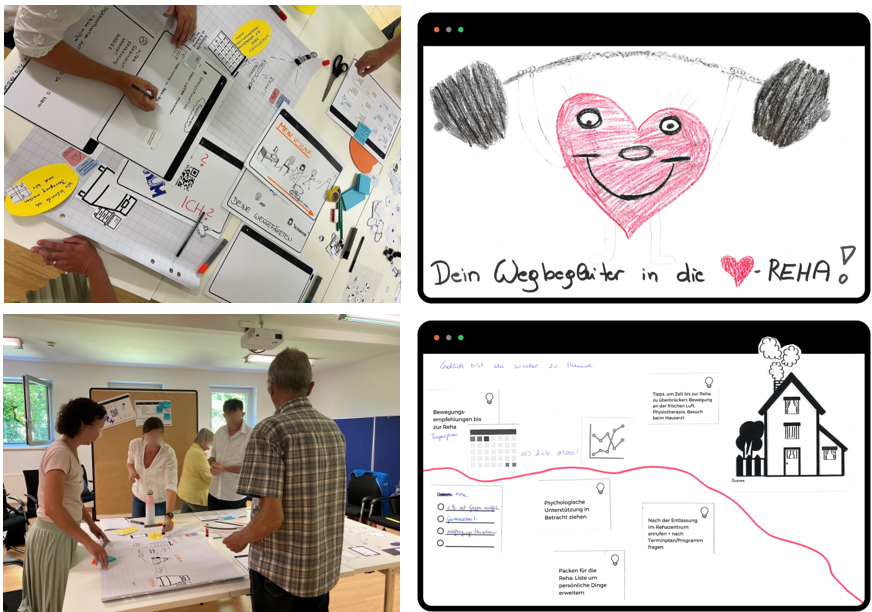
Figure 1. Impressions from the co-design group work.
Based on the results of the co-design workshops, a digital prototype was developed that addresses the expressed needs and contains the defined requirements. The next step will be to develop an app, which will then be tested by cardiac patients in the acute hospital setting.
Get involved!
We are always looking for people who are interested in testing our app! Currently we are looking for:
- Cardiac patients who participated in a cardiac rehabilitation programme
- Healthcare professionals from the cardiology sector (nursing staff, therapists, doctors...)
Please feel free to get in touch with us!
Additional information and contact
Isabel Höppchen, MSc
PhD student Human-Computer Interaction
Ludwig Boltzmann Institute for Digital Health and Prevention
Lindhofstr. 22, 5020 Salzburg
Contact: This email address is being protected from spambots. You need JavaScript enabled to view it.
Click here for the project website.
Everyday Morality
What is this project about?
How can good people do bad things? How can people act contrary to their moral beliefs without having a bad conscience? White lies, rule bending, finding excuses for our own behaviour, which we would judge others for … To be honest, we have all done stuff like that. Nobody is always 100 % moral - misconduct spans from little untruths to refined fraud, from omission of some facts to crimes. All these things have one thing in common: When performing these actions, the same mechanisms are at work that allow us to ignore our moral compass. At least that is what theories assume. In this project, we examine when, how often, in which contexts and by whom these different mechanisms are applied.
Why is this important?
Our goal is to check to what extend theory corresponds with reality. How is unmoral behaviour in everyday life justified? What influence do situational differences and relationships between actors have? Which actions are seen as immoral?
How can Citizen Scientists participate?
Your task is to observe your surroundings after a short online information. Who acts immoral? When? What justifications are provided for this behaviour? Not just encounters in everyday life matter, but also media, newspaper reports, narratives, movies, social media etc. can be analysed. For this, short questionnaires will be sent to you during the course of one week.
At a later point in time, Citizen Scientists are invited to analyse the submitted scenarios, to build categories and thereby check to what extent theory and reality correspond. Another aim is to discover new categories and strategies.
Podcast episode
If you would like to learn more, you can listen to the Wissen macht Leute podcast episode about the project (in German).
Zeit.shift
Offers active beyond the duration of Zeit.shift
The Zeit.shift project ended in June 2023. The central web offerings continue to be active beyond the project duration. Specifically, the results can be followed via the website. The newly generated web portal is accessible worldwide and the text material provided (several million newspaper pages) is searchable and downloadable. Geodata and content tags can be assigned via an external platform and the online game Ötzit! is freely available. However, an evaluation of the generated data, as formulated in the project description, no longer takes place after the end of the project.
What is the Zeit.shift project about?
The aim of the Zeit.shift project is to establish a long-term, cross-border cooperation for the preservation, development and dissemination of the cultural text heritage of Tyrol and South Tyrol from the late 19th and early 20th centuries. Using historical newspapers as a prototype, the text collections are to be preserved in the long term and made accessible to the general public in a web portal. This offers the opportunity to learn more about one's own cultural heritage and to learn to appreciate historical texts as a source for exciting discoveries. An important focus of the project is the active involvement of the population. Interested citizens are invited to participate and can contribute to the text indexing by annotating the text material online. Together with citizens, relevant key terms and the correct location of the text excerpts will be added in order to improve the usability and searchability of the historical text material.
How can one participate?
Via the Historypin platform, interested citizens can participate in text indexing by describing the content of advertisements in historical daily newspapers and geolocating them via Google Maps in order to virtually reconstruct the shopping streets of 100 years ago. In this way, one can gain an insight into which products were traded and which events took place in yesterday’s world. One discovers professions and trades, some of which no longer exist, and has the opportunity to draw one's own comparisons of what can be found in the places mentioned today. This is only a small excerpt of the variety of topics offered by the advertisements in the press of that time - a voyage of discovery into the world of our ancestors. Participation is not tied to a specific time or place; all you need is internet access and a computer or smartphone. Tutorials will help with questions, and there is also the possibility of contacting the Zeit.shift project staff directly (This email address is being protected from spambots. You need JavaScript enabled to view it.). The citizen science activities are aimed at all citizens and no special knowledge is necessary to participate in the project.
Another citizen science approach in the Zeit.shift project was developed with the gamification application Ötzit!. The online game Ötzit! is about saving Ötzi from dangerous animals by correctly typing out falling words in Fraktur script. A game against time! Ötzit! is primarily aimed at German-speaking pupils aged 11-14, but is open to anyone interested. The aim of the game is to create an awareness of the digitised newspaper collections and to practise reading historical documents in Fraktur script. All data anonymously provided by the players (e.g. typed words) was analysed and used to explore automated OCR corrections via crowdsourcing and to improve the searchability of the digitised collections.
Why is it important and what happens to the data?
The benefit for the citizens is to experience the newspapers as a historical source and to learn something about their own cultural heritage through them. Together with the project team, they discover hidden archival treasures, thus making an invaluable contribution to indexing. In the project, the Zeit.shift portal for archiving, managing, researching and presenting digitised historical daily newspapers of the Tyrolean region was implemented. Using search filters, such as place and family names, time period, etc., the search results can be narrowed down precisely and the search term appears in the full text highlighted in colour. The data generated by the Citizen Science activities serve as support for the computer-linguistic analysis (e.g. correction of recognition errors in digitised texts in Fraktur script).
Photo gallery
-
 Unterinntaler Bote, 03.01.1908, S. 6 Unterinntaler Bote, 03.01.1908, S. 6
Unterinntaler Bote, 03.01.1908, S. 6 Unterinntaler Bote, 03.01.1908, S. 6 -
 Schwazer Lokal-Anzeiger, 16.04.1927, S. 4 Schwazer Lokal-Anzeiger, 16.04.1927, S. 4
Schwazer Lokal-Anzeiger, 16.04.1927, S. 4 Schwazer Lokal-Anzeiger, 16.04.1927, S. 4 -
 Unterinntaler Bote, 03.01.1908, S. 6 Unterinntaler Bote, 03.01.1908, S. 6
Unterinntaler Bote, 03.01.1908, S. 6 Unterinntaler Bote, 03.01.1908, S. 6 -
 Reuttener Nachrichten, 04.07.1930, S. 3 Reuttener Nachrichten, 04.07.1930, S. 3
Reuttener Nachrichten, 04.07.1930, S. 3 Reuttener Nachrichten, 04.07.1930, S. 3 -
 Unterinntaler Bote, 03.01.1908, S. 8 Unterinntaler Bote, 03.01.1908, S. 8
Unterinntaler Bote, 03.01.1908, S. 8 Unterinntaler Bote, 03.01.1908, S. 8 -
 Unterinntaler Bote, 03.01.1908, S. 10 Unterinntaler Bote, 03.01.1908, S. 10
Unterinntaler Bote, 03.01.1908, S. 10 Unterinntaler Bote, 03.01.1908, S. 10 -
 Unterinntaler Bote, 03.01.1908, S. 7 Unterinntaler Bote, 03.01.1908, S. 7
Unterinntaler Bote, 03.01.1908, S. 7 Unterinntaler Bote, 03.01.1908, S. 7 -
 Reuttener Nachrichten, 27.06.1930, S. 4 Reuttener Nachrichten, 27.06.1930, S. 4
Reuttener Nachrichten, 27.06.1930, S. 4 Reuttener Nachrichten, 27.06.1930, S. 4 -
 Schwazer Lokal-Anzeiger, 16.04.1927, S. 4 Schwazer Lokal-Anzeiger, 16.04.1927, S. 4
Schwazer Lokal-Anzeiger, 16.04.1927, S. 4 Schwazer Lokal-Anzeiger, 16.04.1927, S. 4 -
 Reuttener Nachrichten, 01.02.1929, S. 4 Reuttener Nachrichten, 01.02.1929, S. 4
Reuttener Nachrichten, 01.02.1929, S. 4 Reuttener Nachrichten, 01.02.1929, S. 4
https://www.citizen-science.at/en/network/international-partners/tag/media#sigProId4ff201727f

Categories to come
What is the project specifically about?
So much hangs on just one thing - and yet words sometimes fail us. How do we talk about our bodies and the things that we need, want, and do when it comes to sex and sexual pleasure? And who do we talk to about these things? Categories to Come invites everybody to put their sexuality into words, and to discuss new words or new uses of words with other people. Goal of the project is to create a platform and gather resources, that open up so far unnamed subject areas of sexuality. They will be accessible both for personal gain and interdisciplinary research.
How can citizens participate in research?
Citizens are actively involved in shaping the future vocabulary of sexual language and provide important impulses for research. Citizens can write down their own terms and descriptions for intimate activities and their own sexual desire. They can also collect and name passages from songs, books or films that are sexually interesting to them. They can look at films and photos and other cultural works and describe what can be seen there and index them. They can read books and texts and filter out places with sexual acts and tag them.
What happens to the results?
The results form a resource to illustrate previously unnamed areas of sexuality. This data collection will be organized and made available as a database and can be used to enhance studies by researchers working in linguistics, social sciences, sexology, gender studies and literature as well as for art production.
What does the research contribute to?
Categories to come helps to build a new resource for research on sexuality in different disciplines. The project is based on two assumptions, namely, 1) the existing sexual vocabulary has only been partly described, and 2) because of sexuality’s visual nature, lack of language, and location within the realm of experience, there are many fantasies and sex acts that nobody has yet attempted to put into words. The project Categories to Come combines artistic and academic research interests. In contrast to purely scientific research, the artistic element also allows one to become creative and to create new words. Categories to come thus contributes to making research into sexual language and sexual desire more diverse.
This project shows what the artistic aspect can be in a research context, how it produces a different kind of knowledge than purely scientific research and how this can make a contribution in an interdisciplinary context. By making the results publicly accessible, citizens can use the database themselves and find new ways and terms to talk about sexuality. This counteracts tabooing and promotes a conscious discussion of one's own sexuality.
Image gallery
-
 "so much revolves around this one topic" "so much revolves around this one topic"
"so much revolves around this one topic" "so much revolves around this one topic" -
 "and still we sometimes miss words" "and still we sometimes miss words"
"and still we sometimes miss words" "and still we sometimes miss words" -
 Facebook header of the project Facebook header of the project
Facebook header of the project Facebook header of the project
https://www.citizen-science.at/en/network/international-partners/tag/media#sigProId8680991c3e


